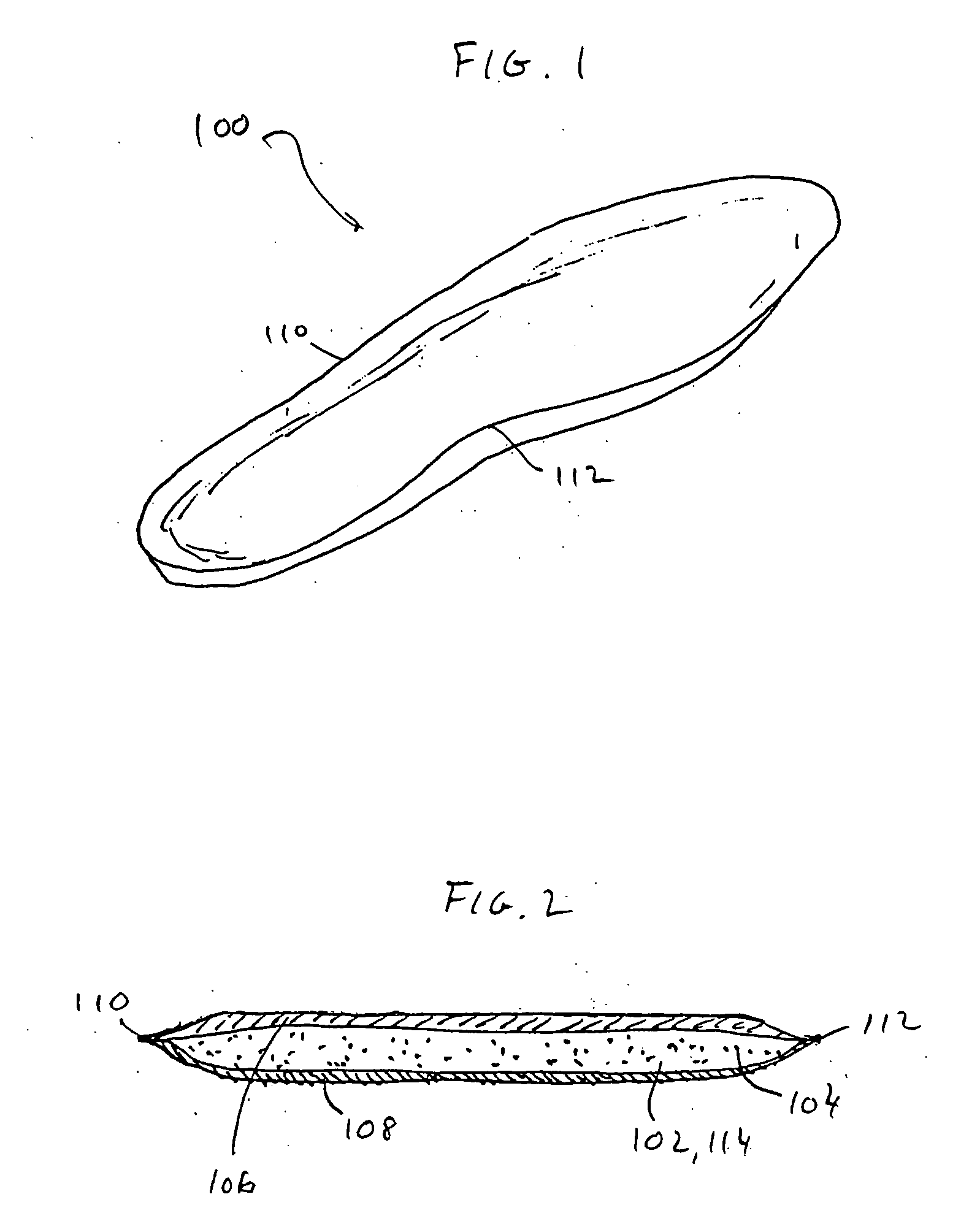Shoe components and methods of manufacture
a technology of components and shoes, applied in the field of shoes, can solve the problems of difficult control of the precise nature of the foam cellular structure, the volumetric expansion of the resin matrix, and the cost and time-consuming of professional shoe inserts
- Summary
- Abstract
- Description
- Claims
- Application Information
AI Technical Summary
Benefits of technology
Problems solved by technology
Method used
Image
Examples
examples
The following Expancel® microsphere grades (consisting of a hydrocarbon gas encapsulated within a thermoplastic (acrylonitrile / methacrylonitrile copolymer) shell) were used for the Examples.
820 DU 40 is an unexpanded, dry grade with an expanded weight average diameter of 10-16 um, an activation temperature range of 75-80° C., and a maximum temperature range of 115-125° C.
098 DU 120 is an unexpanded, dry grade with an expanded weight average diameter of 30-40 um, an activation temperature range of 150-170° C., and a maximum temperature range of 210-230° C.
The following thermoset polymers and polymer precursors were used as the polymer matrix for the Examples.
The Bayflex® 956 polyurethane system consists of two liquid components. Component A is a diphenylmethane diisocyanate (MDI) based pre-polymer and component B is a polyether polyol system. The specification of these components is obtainable from Bayer Polymers Division (product code U956).
The following thermoplastic pol...
PUM
| Property | Measurement | Unit |
|---|---|---|
| diameter | aaaaa | aaaaa |
| diameter | aaaaa | aaaaa |
| diameter | aaaaa | aaaaa |
Abstract
Description
Claims
Application Information
 Login to View More
Login to View More - R&D
- Intellectual Property
- Life Sciences
- Materials
- Tech Scout
- Unparalleled Data Quality
- Higher Quality Content
- 60% Fewer Hallucinations
Browse by: Latest US Patents, China's latest patents, Technical Efficacy Thesaurus, Application Domain, Technology Topic, Popular Technical Reports.
© 2025 PatSnap. All rights reserved.Legal|Privacy policy|Modern Slavery Act Transparency Statement|Sitemap|About US| Contact US: help@patsnap.com

